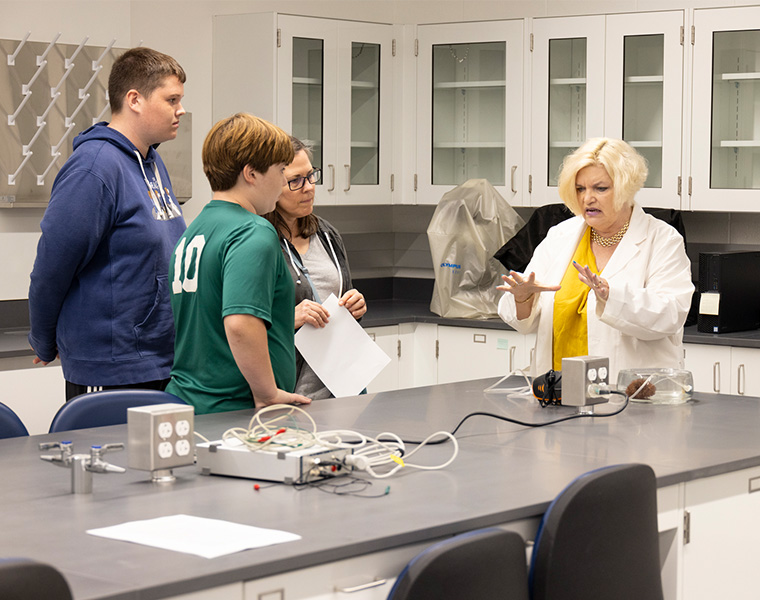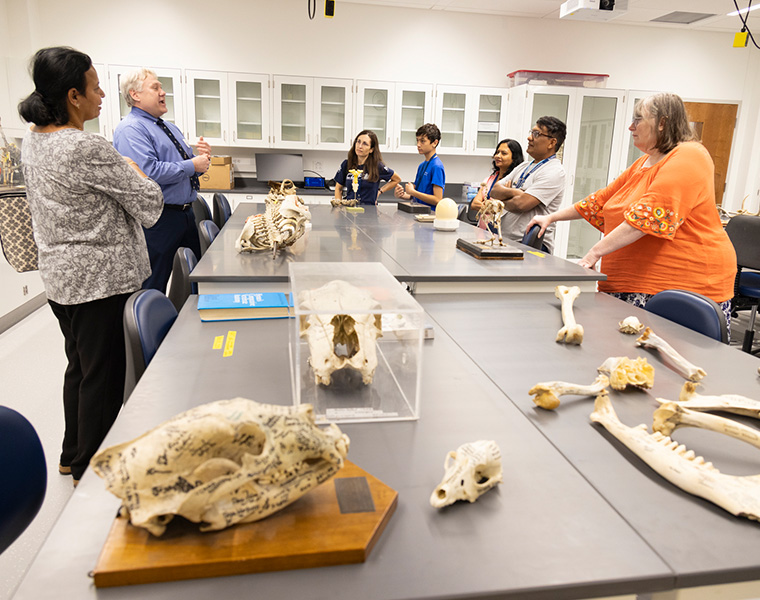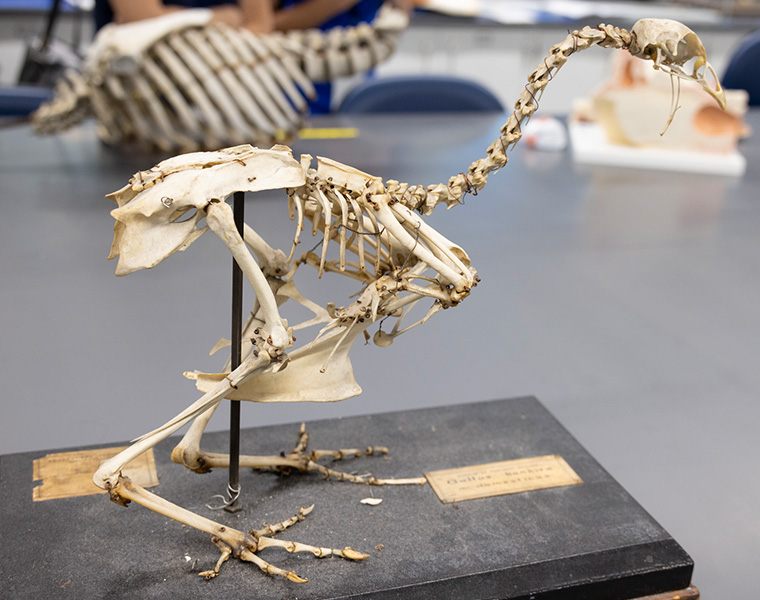Case Western Reserve University is cultivating a new generation of scientists with the opening of its 30,000-square-foot, state-of-the-art biology laboratory classrooms and collaborative spaces.
As part of Parent and Family Weekend (Sept. 27-29), President Eric W. Kaler, Deputy Provost Lee Thompson and Interim College of Arts and Sciences Dean Peter Whiting officially opened the space, which is housed in the Dental Research Building. Students, parents, family members and alumni toured the space as they got to see the high-tech and high-touch advantages students learning in this space have been taking advantage of all semester.
“The new teaching laboratories will greatly expand our ability to teach cutting-edge laboratory classes,” said Department of Biology Chair Mike Benard. “This new facility has state-of-the-art equipment in specialized classrooms, including a microscope facility, a teaching instrumentation laboratory, a dedicated microbiology classroom, an augmented reality Microsoft HoloLens classroom and computational space, an aquarium facility for raising aquatic life, and a student resource room.”
Each academic year, more than 1,500 students will use these facilities, benefiting biology majors, neuroscience students, and those on pre-health professional tracks alike. The university’s investment in this new instructional space is designed to push forward education and research in fields such as molecular biology, genetics and microbiology.
The new laboratory space will expand the Department of Biology’s ability to teach classes based on the CURE (Course-based Undergraduate Research Experience) format, in which students learn about fundamental principles in biology through authentic research experiences.
The two-year renovation, managed by the Department of Campus Planning and Facilities Management, was a collaborative effort among biology faculty members, architects, engineers and contractors. Faculty attended multiple planning sessions and provided thoughtful feedback throughout the process—all while keeping the student experience at the forefront. Their goal? Ensuring the new laboratory spaces and equipment align with the educational objectives for undergraduate students, offering them the best possible learning environment.









